- OT
- Science and vision
- Technology
- Computer says go
The cover story
Computer says go
From putting data in the hands of patients to predicting which children will develop high myopia, OT explores the potential of artificial intelligence technology for eye care

10 June 2023
On 11 May, 1997 world chess champion, Garry Kasparov, took the elevator to the 35th floor of a skyscraper in Manhattan.
He took his seat at a table with two small flags, a chess board and his opponent: IBM supercomputer Deep Blue.
“I had many emotions sitting down,” he later told the podcast, In Machines We Trust.
“It was hard to explain my experience because I was really the first worker to have my job threatened by a machine,” he said.
Kasparov explained that he was accustomed to reading the body language of his opponent. He would prepare for each match by studying the previous games and tendencies of the rival player.
But Deep Blue was a blank slate, coming up with moves that the computer engineer who built it did not understand.
“It’s easy for a chess machine, after all. They don’t care if they win or lose. They don’t even know they’re playing chess,” Kasparov said.
Deep Blue beat Kasparov in six games, becoming the first computer to beat a human in a traditional chess tournament.
More than two decades later, artificial intelligence (AI) has become integrated into the fabric of daily life. It is there at the supermarket checkout, on the phone in your pocket, a disembodied voice on the kitchen benchtop telling you might need a jacket as well as a jersey as you walk out the door.
Within eye care specifically, the first AI-based medical device to receive US Food and Drug Administration approval was a tool for automatically grading retinal images named IDx.
Deep learning has been applied to fundus photography and optical coherence tomography scans to detect diabetic retinopathy, glaucoma, age-related macular degeneration and retinopathy of prematurity.
With advances in AI, some clinicians will empathise with Kasparov concerns when he sat across the table from Deep Blue – would this computer replace him?
An article published in the Journal of Optometry in 2022 described the views of 400 US optometrists on artificial intelligence.
While the majority (72%) agreed that AI will improve the practice of optometry, one in four expressed concern that AI would replace providers.
You would forgive Kasparov, who walked away from his 1997 defeat without talking to reporters, for holding a grudge. But decades later Kasparov is a strong advocate for the potential of AI.
“Technology doing our work is the whole history of human progress,” he told In Machines We Trust.
“It's a tool and makes us smarter. The way a telescope augments our vision—what matters is how we focus it,” Kasparov said.
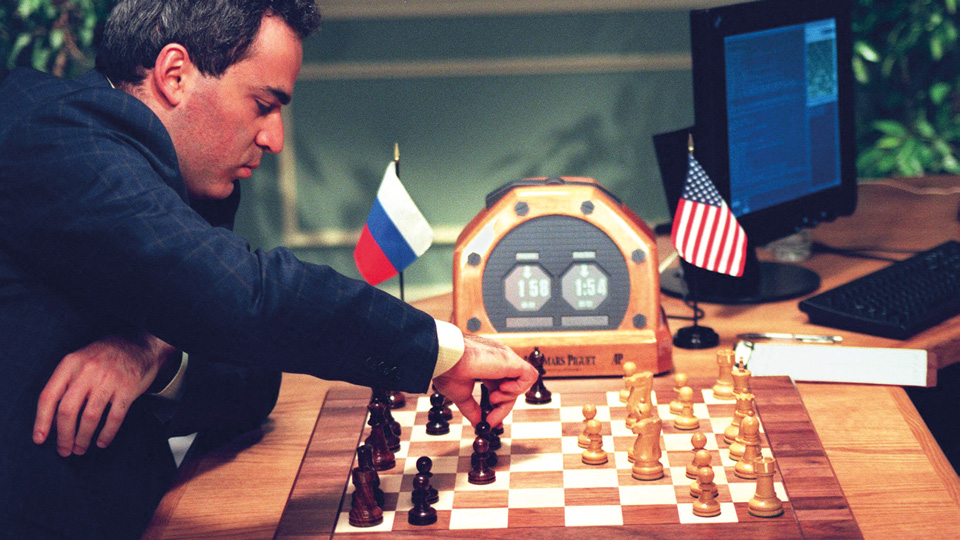
Home monitoring
For optometrist Stephanie Campbell, a formative experience that illustrated the potential of technology occurred when she was testing the vision of a young boy with Down’s Syndrome while completing her PhD at Cardiff University.
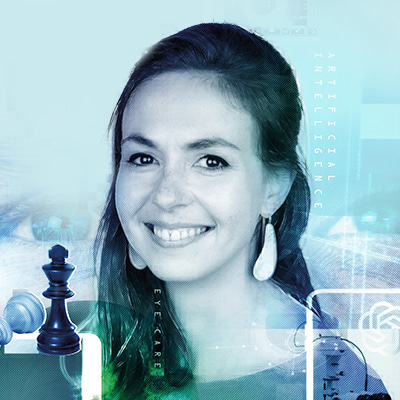
“He could find the YouTube icon but when he got into YouTube, he couldn’t really see much detail,” she said.
Campbell began to wonder if she could develop a video game where patients would tap on the objects that they can see. Technology that could be used from the comfort of a patient’s home would also lessen the stress that some patients feel when attending a sight test.
“If we could gamify the measurement of vision, it makes someone less nervous, and you actually get better data when the patient is relaxed,” Campbell explained.
After discussing the idea with software engineers at an NHS Hack Day in Cardiff, a prototype was developed and eventually patented in 2015.
A decade after the sight test that first inspired her, Campbell leads Okko Health – a company with 20 staff based in London and Bristol that develops home-monitoring apps for measuring vision.
During the development of the technology, Campbell has become aware of the variety of measurements of visual function that can be assessed using an app – including colour vision, distortion, motion perception and contrast sensitivity alongside visual acuity.
“I think the penny drop moment was when we realised that this is a visual sciences lab in everybody’s pocket,” she said.
“If we can do this really well and get it calibrated, then the discoveries that clever people in universities have made over decades can be translated for patients who would never usually have access to those diagnostics,” Campbell explained.
Campbell presented results from an initial pilot of 50 AMD patients using an Okko Health app to monitor their vision at the Association for Research in Vision and Ophthalmology annual conference in 2022.
The pilot found that the Okko Health app was a feasible method for monitoring visual function at home, and there was good adherence among the Nottingham Hospital patients who downloaded and registered with the app.
A new study will see 500 AMD patients across Oxford Eye Hospital and Nottingham Hospital testing their vision at home three times a week with an Okko Health app.
An AI algorithm will be trained using information collected through the app, alongside OCT scans and clinical information gathered in secondary care.
“Essentially this study, from a vision science perspective, is looking at whether structure and function correlate and to what extent,” Campbell explained.
Campbell describes the technology that is being developed by Okko Health as “patient-driven” AI.
When the app was first being tested in 2020, a group of 100 volunteers from the Macular Society provided feedback on everything from colours and fonts to the images used within the app.
“It was a delight and it continues to be – that we built this technology with the people who are going to be using it,” Campbell said.
The average age within the volunteer group was 77. As the user experience testing was conducted during lockdown, it occurred over video calls – many volunteers had learned to use Zoom in order to communicate with their grandchildren.
I think the penny drop moment was when we realised that this is a visual sciences lab in everybody’s pocket
Campbell highlighted that the aim is for the Okko Health app to flag deterioration of disease so the patients who need care are seen in hospital sooner.
The app also provides reassurance to those who are at low risk and can self-test at home.
“The whole point of the AI we are developing is to keep people out of hospital who don’t need to be there,” Campbell shared.
“This approach is really about driving better outcomes and preventing sight loss at scale,” she said.
Campbell believes that alongside improving clinical care, Okko Health has potential to improve the patient experience. If people are able to monitor their vision at home, it gives them greater control over their lives.
“Once they know that they don’t need that anti-VEGF treatment for four months, they can plan for that holiday,” she said.
“From a patient perspective, I think we underestimate how much of a burden that eye disease is to their daily lives,” Campbell shared.
Smartphone insight
Optometrist, Kishan Devraj, developed a chat bot to answer the questions of patients with genetic eye disease.
Devraj, who has been building websites in his spare time for the past decade, collaborated with Professor Mariya Moosajee in order to make the information on her new Gene Vision website more accessible.
“If you have a genetic eye condition, or you have someone in the family who has a genetic eye condition, you can have a conversation with this chatbot,” Devraj explained.
Since the launch of the chatbot, Devraj has embarked on a new project led by Moosajee called Oversight.
They aim to create technology that harnesses digital activity to analyse the daily impact of an eye condition.
The background data collection that occurs on smartphones – for example, step count, mobility and walking speed – would be analysed to see if it correlates with clinical information and scans connected in the clinic.
“I thought we could take a lot of this data and compare it against fundus images and visual acuity. If eye disease is getting worse, how are these metrics from the phone changing? Perhaps we could use that as a way to assess eye disease,” Devraj explained.
Devraj explained that Moosajee initially approached him to see if an app could help to measure the impact of new treatments for genetic eye disease.
“She wanted to assess their visual function better. There were many treatments out there and there was no good way of assessing how someone’s eye disease was changing or improving,” he said.
Devraj is now completing a pilot at Moorfields Eye Hospital as part of a PhD that will focus on developing the technology. He aims to recruit 200 patients over the course of his doctorate.
Alongside readily accessible smartphone information, Devraj has received agreement from Apple to have access to more specific data such as measurement of light levels and assessing how someone uses the keyboard.
“How fast do they type? How many mistakes are they making?” Devraj said.
“With people with inherited eye disease, in certain light conditions, their mobility is less. If we could assess the amount of light on their phone and compare it with how they move around, we could tell how their eye disease is changing,” he shared.
I think optometrists should be aware that the profession is changing for the better
The impact of eye conditions on mental health is also explored through analysis of sleep data and the types of words that patients use in messages.
“We wouldn’t be able to extract exactly what they are saying on their messages – but we can get sentiment analysis where we can see if the words being used are positive or negative,” Devraj shared.
Although currently the project is at an early stage, in the future there is potential for AI to extract insights on disease progression.
“It will be able to compare clinical changes from results in the test room to changes in the data collected in the app,” he said.
Devraj believes that clinicians have a vital role to play in shaping AI going forward. He highlighted that many people who build technology do not have an experience of working with patients.
“I think optometrists should be aware that the profession is changing for the better and there are a lot of opportunities out there. They can get involved outside the test room. Healthcare needs you because you are at the frontline,” he said.
Myopia and AI
Professor Daniel Ting is head of artificial intelligence and digital innovation at the Singapore Eye Research Institute.
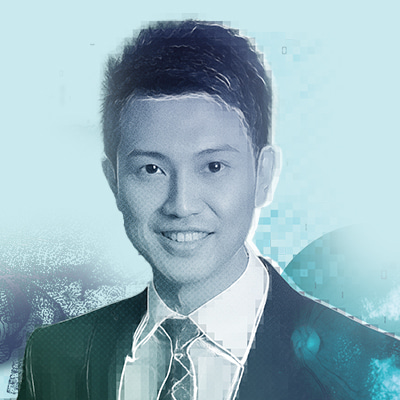
Ting and colleagues have also developed two AI algorithms with applications for myopia.
The first algorithm helps to screen for myopic macular degeneration and myopic choroidal neovascularisations among adult myopes – as well as identifying those who at risk of developing the conditions.
The second algorithm, published earlier this year in Nature Digital Medicine, uses baseline fundus imaging alongside clinical data (age, gender, race, parental myopia, and baseline spherical equivalent) to predict the five-year risk of a patient developing high myopia.
Ting told OT that once patients are identified as being at risk, preventative action can be taken – for example, through lifestyle, medical or optical interventions.
“We have AI that has the ability to look into the future. I think this is one of the powerful things that these algorithms are able to offer,” he shared.
When it comes to mitigating the risks of relying on AI, Ting outlines three approaches to deployment. AI can either be fully automated – where AI makes the call – or assistive, where the human stays in the loop and makes the final call.
However, in Ting’s view, a third hybrid model holds the most promise. Under this approach to deployment, AI would hold full responsibility for simple decisions, but would require oversight for more challenging or borderline cases.
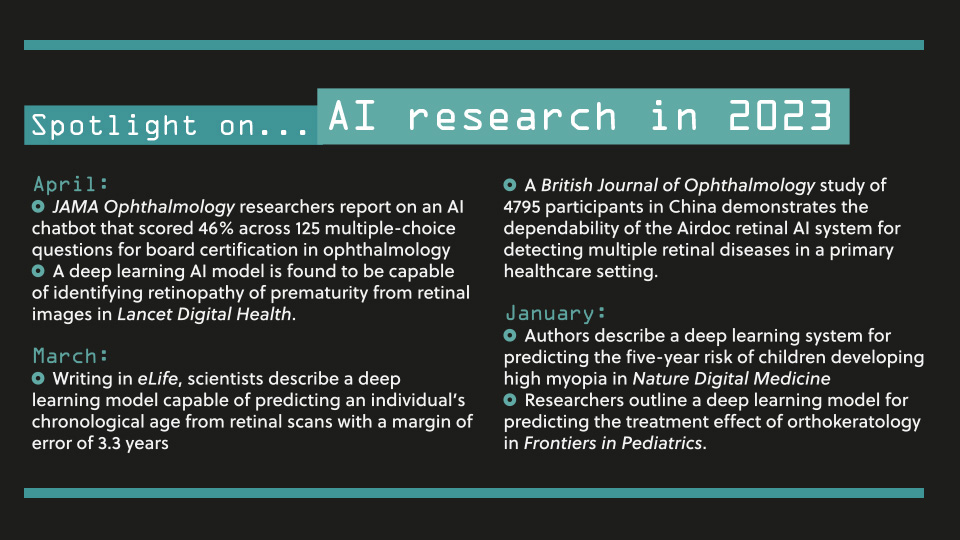
Ting highlighted that as well as making the most economic sense, this approach makes use of the innate strengths within human and artificial intelligence.
Human clinicians are good at recognising normal eyes – because this is what they see all day in clinic – while AI excels at identifying the abnormal.
“If you combine the strengths between what AI can do and humans can do that is a win-win situation,” Ting emphasised.
Ting shared that eye care is a field that has access to advanced technology and a plethora of images – which serve as a valuable database for AI.
“To me, it is like diamonds because I use this data for AI all the time,” he shared.
Ting highlighted that for AI to be effective, it is important to have comprehensive and seamless digital records within optometry practices.
“We want the patients to have a one-stop service where you can access the entire eye care history that this patient has,” he said.
“AI itself is great, but it has to work within a digital eco system,” Ting shared.
As AI has developed, some clinicians have expressed concern about whether all groups will benefit from the technology equally.
Writing in the Community Eye Health Journal in 2022, Professor Andrew Bastourous and Dr Charles Cleland highlighted that the accuracy of an AI system depends on the quality and the suitability of the data it is trained on.
The authors observed that algorithms for diabetic retinopathy screening have typically been trained in well-resourced health systems that have access to large databases of retinal images.
“This further leaves behind those living in low-resourced health settings, an issue which has recently become known as health data poverty.”
Among the 400 US optometrists surveyed for the Journal of Optometry article, around half (53%) expressed concern around the diagnostic accuracy of AI.
Responding to concerns around bias within AI, Ting highlighted that regulatory approval processes involve establishing whether the algorithm is generalisable.
“If a company has already got approval from your local regulatory body, then I think that is safe to use,” he said.
Ting shared that a crucial part of the research and development process is establishing who the intended user of an algorithm is.
If insufficient data exists for a certain group, there are AI techniques that can be harnessed to make up for this shortfall, such as federated machine learning.
One of the research streams being undertaken by Ting’s lab is looking into the creation of synthetic AI – where data could be artificially generated.
Ultimately, Ting sees AI as a tool for addressing the fact that half of the 2.2 billion people worldwide with visual impairment lost vision because their condition was not detected early enough.
“If you screen, stratify and intervene early, you could reduce that avoidable sight loss,” Ting shared.
Expertise for all
Dr Carlos Ciller is chief executive of RetinAI, a Swiss company that provides a range of software solutions to improve patient outcomes.
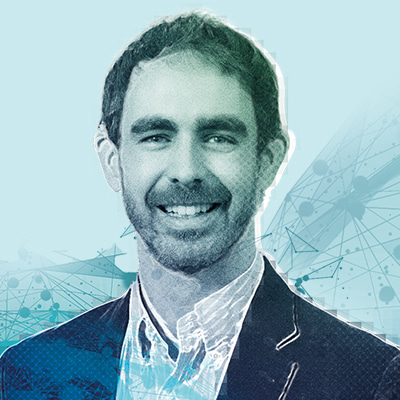
“We have progression prediction algorithms in retinal diseases, including geographic atrophy, that enable us to understand how the disease is going to evolve with and without treatment, and with different treatment regimes,” Ciller shared.
Using RetinAI's software, clinicians can drag and drop patient data and receive a report with AI analysis. The software is certified as a medical device in the US and European markets, with AI models certified in Europe. Although RetinAI’s initial focus is ophthalmology, Ciller also sees the potential of the software for optometrists working in primary eye care.
“We see a major opportunity to democratise access to expertise to evaluate complex diseases,” he said. “I think it will improve efficiencies within the healthcare system and close the gap of long wait times for treatment,” Ciller observed.
Ciller shared his view that AI has the potential to enable clinicians to spend more time on important tasks – such as spending more time with patients.
“The human touch is what matters. That is the thing that cannot be replaced by a machine,” he said.
“I think consistently what we have seen with the advent of any new technology is that jobs are a collection of tasks. Some of these tasks evolve over time. We see technology helping optometrists and ophthalmologists to do things more efficiently,” Ciller emphasised.
We see a major opportunity to democratise access to expertise
Ciller sees the potential of AI for enabling screening in countries where the eye care workforce would previously not have supported this at scale. He shared that clinicians should not be overly reliant on the decisions made by AI until they are confident that it is performing a task properly.
“At the same time, if you have certainty that it has gone through a process of validation, testing and regulatory approval, I think it is a staggered approach. You start as a co-pilot, then you move to delegating menial tasks,” he said.
Ciller encouraged optometrists to have an open mind when it comes to incorporating AI in practice. “I think AI, with the appropriate regulations, an open mindset and the right clinical environment, can do a lot of good things,” he said.
Professor Pearse Keane on…ChatGPT
“These are effectively chatbots but their key feature is that, because they have been trained on huge amounts of data, and because they have billions of parameters, their scale gives them potential for a wide range of applications.
“These models are already being incorporated into search engines and other commonly used pieces of software. Some of these models have proven powerful enough that they can pass medical licensing or university entrance examinations. They haven’t yet been employed in eye care, but this is likely to happen very soon.”
From code to clinic
Moorfields Eye Hospital consultant ophthalmologist Pearse Keane is a professor of artificial medical intelligence at University College London.Keane shared with OT that AI will save sight by allowing earlier detection of sight-threatening disease. He added that the technology will also reduce the burden of chronic eye disease on patients by reducing the number of times they have to attend hospital.
“I think the main benefit of AI in eye care will be its ability to bring highly specialised expertise out of the hospital eye services and into the community and homes of patients,” he said.
While there is enormous potential for the application of AI to eye care, Keane highlighted that there can be challenges in “going from code to clinic.”
AI must be proven to be safe and effective in large clinical trials and receive regulatory approval as a medical device.
“This is a very expensive and time-consuming process and - as yet - only a small number of AI systems have achieved it. There are also challenges in how these systems can be integrated and deployed in healthcare systems and questions about the business models - how much will they cost and who will pay for them?” he said.
Keane believes that the development of foundation models in AI hold potential for eye care.
He explained that ChatGPT is an example of a foundation model that uses language, but these models can also be trained on large amounts of images and other data.
“These are exciting because they are likely to prove useful in diagnosis of less common and rare eye diseases, and because they are also likely to work better across a wide range of ethnicities and other demographic groups,” he said.
Preventing rogue systems
Karl Jeebaun is the chief executive of Sparca, a software development company that includes Advanced Ophthalmic Systems (AOS) within its portfolio.
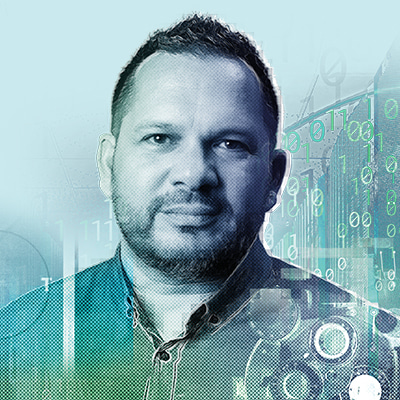
AOS provides clinicians with software that can objectively grade the anterior segment through image analysis.
The software mimics the way a human brain would interpret a result if it had all the information stored in an image not visible to the naked eye.
“AOS utilises a branch of AI called computer vision to enable highly accurate and repeatable, objective outcomes,” Jeebaun said.
AI is also used by the company within AOS VA to monitor a patient’s distance from the screen during a remote visual acuity test.
Reflecting on how AOS technology is incorporated into practice, Jeebaun shared that many practitioners consider how technology can improve the way they work.
“For the vast majority it has really boiled down to the use case. How can technology improve, streamline or retain the current client services or processes they do manually today?” he said.
Jeebaun observed that while an increasing number of AI systems are receiving regulatory approval, wide scale adoption within optometry practices is another matter.
“Until there is clear guidance for use of this type of technology from industry then as much as professionals get excited their default position is ‘Am I allowed to use this technology?’,” he shared.
“Getting to a point where AI is truly embraced is still a way off, in my opinion,” Jeebaun added.
He highlighted that opportunities presented by AI include reducing waiting lists and limiting avoidable sight loss, while also conserving the resources of the NHS.
Unaccredited systems that have not been clinically validated are one of the key risks that Jeebaun is wary of.
“It really only takes one of these rogue systems to have a bad patient outcome and set the whole industry back years,” he said.
Through Jeebaun’s role on the OSA, he is developing a digital checklist for suppliers to understand the standards they need to meet to enter the UK market, alongside a database that buyers can use to check if a product has the appropriate accreditation.
As part of the NHS working group for eye care transformation, Jeebaun is contributing to a project to standardise digital imaging formats in order to improve interoperability between the NHS and community optometry.
Jeebaun believes that the objective analysis provided by AI will lead to better outcomes for patients.
“In the majority of cases, AI in its current form is designed to assist and streamline processes not replace the practitioner. The practitioner today, will always have the final say on pathology, treatment and diagnosis,” he said.
Advertisement


Comments (0)
You must be logged in to join the discussion. Log in